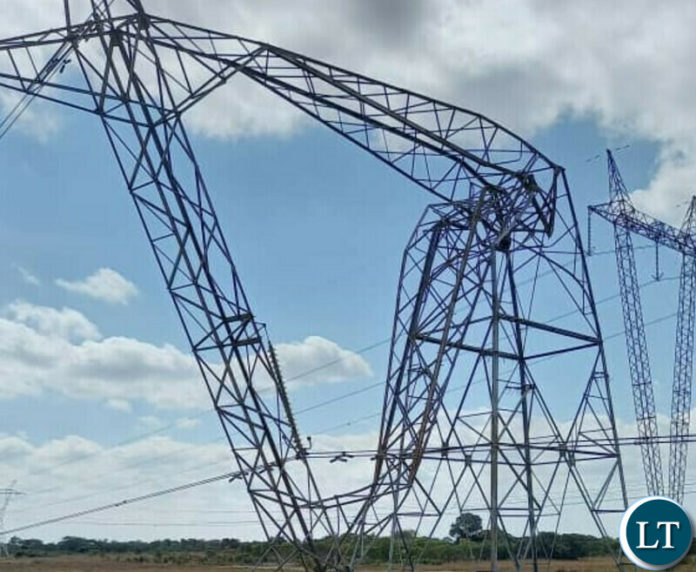A local newspaper in Namibia reprots that Namibia has secured a “firm” contract with Zambia for uninterrupted power supplies, according to Kandali Iyambo, the acting managing director of NamPower. In an interview with The Brief, Iyambo explained that “What we have with Zambia is firm. Firm means that it’s uninterrupted. It’s not source based. We are not sourcing our power from a specific plant, but from the total portfolio. If you enter into a contract and say its uninterruptable, except for force majeure, which is also specified, then they ought to supply and honour their contract with us because its firm.”
Namibia imports 180 megawatts (MW) from Zambia after NamPower secured an additional 80MW from the Zambia Electricity Supply Corporation (ZESCO) last April, under a 10-year power supply agreement reported to be worth N$8.5 billion (US$500 million). The reported N$850 million-a-year deal, aims to reduce the country’s dependency on South Africa’s Eskom, which is experiencing acute challenges resulting in Africa’s most developed economy enduring rolling power cuts.
However, Zambia is currently battling a power deficit due a drastic reduction in available water in the Kariba reservoir for electricity generation at Kariba North Bank Power Station, resulting in the introduction of a 12-hour load-shedding. Despite this, Iyambo has ruled out the possibility of Namibia facing load-shedding due to supply constraints in South Africa, Zambia, and Zimbabwe, which all export power to the country.
“The issue of load-shedding is not foreseeable in the near future at all. It may just mean that NamPower might have to source power from the SAPP to meet the country’s energy demand,” Iyambo said.
As a member of the Southern Africa Power Pool (SAPP), Namibia, Zambia and other regional utilities assist one another during power supply emergencies. Iyambo stated that in SAPP) members actually assist each other as power utilities. “It’s on the premise that we assist each other as countries or as utilities when the other utility is facing problems,” she said.
Namibia imports a total of 460MW from regional power utilities to meet its daily energy demands of 500MW, and NamPower recently reduced its firm offtake from Eskom by half to only 100MW, with a further non-firm arrangement for 300MW. In addition, the company is also undertaking five power-generation projects and 11 transmission projects aimed at reducing its reliance on imported electricity, the majority of which will be funded through the power utility’s substantial cash and liquid assets.
Although Iyambo was tight-lipped on the exact value of the additional 80MW Namibia is getting from Zambia, she noted that “the value of the agreement depends on which side you are looking at it, because there are other factors that need to be considered on our side, including exchange rate, as we use the Namibia dollar”.
In conclusion, Namibia has secured a “firm” contract with Zambia for uninterrupted power supplies, despite the current power deficit in Zambia and the ongoing power supply challenges in South Africa. NamPower and the Southern Africa Power Pool (SAPP) will work together to ensure that Namibia will not face load-shedding in the near future, while also working on power-generation projects to reduce the country’s reliance on imported electricity.



Key words : Excess and Firm
You wonder where ZESCO takes all this money…clearly a company with bloated expenditure run by fat greedy cats and a company with too much political interference. Why have we not seen independent financial audits of ZESCO for the past 20 years
Don’t be dull, they have debts of over $3.5bn!
Short-sightedness on the part of UPND. One side it want to increase copper production from 890,000 tonnes to 3,000,000 tonnes, on the other it exports power that is badly needed for increase in production
Bally is a failure! Disaster in the making! Uniterrupted underground corruption in mines, FISP supplies and insurance, health procurement ( Sylvia is late Sata’s greedy inner circle protege), Bally knows this still keeps her.
The electricity tariff for NamPower in Nambia is around $11 .5 cents per Kwh.The ZESCO tariff in Zambia averages around $5.2 cents per Kwh.
ZESCO makes close to 100% profit exporting electricity to Namibia.
They make a huge loss when supplying the domestic market (at $3 cents per Kwh for residential customers)
Mozambique which is the main exporter of power in the region has a tariff of $11 cents per Kwh.
Independent…. profit is not everything…. you stifle your own industry for a fist of dollars so when and how do you develop your own country. Remember shortcuts are always wrong cuts. How do you produce the imaginary 3million tonnes of copper with this loadshedding?
Like what Tarino Orange said…way too much Political interference plus ZESCO fat cats chewing all the money….they need the money to buy expensive cars for their side chicks and to sponsor Dubai shopping sprees
ZESCO board are very dull indeed. Increase your capacity or invest heavily in your electricity generation so that you can meet the demands. Sell at higher tariff and subsidise your local market. Nothing wrong with exporting power as long as its not at the expense of your local market.
I wonder how we Zambians think, we want to live in our own country like as if we are refugees, why would a well meaning Zambia be giving a comparison of tariffs with other countries? It shows how dull we are, going back and forth, none progressive. By now what we must be thinking of is how to reduce the Zesco tariffs even more to ensure that it is affordable to every Zambian and that even if we export our electrcity, no one suffers a load shedding. But, NO!! all we do is what we best at, stealing, telling lies and thinking that we do much better than all the other countries in the southern region. 58 years of independence, no progressive minds.
Comments are closed.